The Hero's Way Read online
Page 2
Wandering around central Italy and recruiting volunteers in the hope of playing a role in the liberation of his country, he was in Ravenna in November 1848 when news came that the Pope had fled Rome. He hurried south and spent some months in Rieti, forty miles north-east of the city, training 1200 men whom he called the First Italian Legion. Not the Piedmontese, the Milanese or the Venetian, but the Italian. It was an important signal.
Let’s take a breath and think about this. Returning to his country after fourteen years away, with no paymaster or supporting political organization, a man moves from town to town openly inviting people to join his private army and fight for a cause. He then has to feed those men, arm them, find uniforms for them and places to sleep, train them and organize them. The fact that such a hothead isn’t immediately arrested suggests a certain recognition that his cause is legitimate. Or it could mean the country is sinking into anarchy.
The further fact that this man, who suffers from frequent bouts of malaria and paralyzing attacks of rheumatism, nevertheless persists in these illegal recruiting activities even after certain towns in Tuscany and Emilia force him to move on and papal troops are sent to Bologna to deter him, suggests a deep personal need to be doing what he is doing. Garibaldi cannot imagine accepting life without a united Italy. Or more generally without a cause. Constantly on the move, offering his services right and left, he appears to be yearning for a home, a community where he can settle. But before he can settle anywhere, that place must be free.
This obsession with freedom is the key to understanding Garibaldi. Freedom from foreign powers dictating the laws of your country, freedom from religious institutions telling you how to behave or simply social conventions telling you how to dress. Garibaldi always dressed and wore his hair and beard absolutely as he wanted, with no regard for etiquette or common practice. Ponchos, sombreros, red shirts, white tunics, hats of many kinds: he wore what took his fancy or would send out the message he wanted to send. And when, aged thirty-two, sailing into the Brazilian port of Laguna, he had focused his telescope on a seventeen-year-old girl standing on the shore, he knew at once he wanted her. Fortunately, when they met, she wanted him too. Anita. That she was married was not an obstacle. She left her family and went with him, bore his children, made his wars her wars, fought beside him in the thick of battle, was imprisoned and escaped, rode through forests with her newborn son in her arms. How could Eleonora and I help but admire their boldness? We too are an unconventional couple in our way; the age difference between us is exactly twice that between Garibaldi and Anita. We’ve faced a few disapproving frowns.
This is the secret of Garibaldi’s charisma. He roused people to fight for a specific political cause, Italy, but the deeper cause was freedom. A freedom he embodied. ‘I couldn’t resist him’ was the typical comment of one young man whose life was changed when he heard Garibaldi speak. Thousands felt this. ‘We all worshipped him, we could not help it.’
Yet, at first, the Roman Republic did not want him. Mazzini had delegated the organization of the defence to Carlo Pisacane, an ex-soldier from the Neapolitan army. Garibaldi’s men were a rabble, Pisacane thought. Tanned, dirty, long-haired, bearded. Their so-called uniforms were ridiculous. Their officers were chosen on the basis of courage and performance, with no regard to education or class. Their cavalrymen saddled and fed their own horses, like brigands or cowboys. They could stay outside Rome and defend the provinces, Pisacane decided.
But as the French army, 7000 strong, approached the city, a new minister of war was appointed. Giuseppe Avezzana had fought in the Napoleonic wars and in Mexico. He summoned Garibaldi at once. The First Italian Legion marched into town through Porta Maggiore on 27 April with Garibaldi on a white horse. ‘I had been dreaming of this since childhood,’ he later wrote. Andrea Aguyar was at his side. Behind them marched 1500 men sporting a bizarre assortment of military cast-offs, extravagant caps and hats, unlikely weapons. The Romans were thrilled. At once, in the teeth of etiquette and convention, it was understood that Garibaldi was the city’s hope.
Avezzana assigned the new arrival the defence of the Colle del Gianicolo above Porta San Pancrazio, on the city’s western side. It was a crucial vantage point. Anyone controlling the hill could bombard the city at will. Garibaldi had just two days to examine the area. He realized at once that the three or four large villas outside and above the city walls would be decisive and had them occupied. He now had 2500 men, and was allotted a reserve of another 1800. In all, Rome had some 9000 soldiers to throw into the battle, but they were thinly spread around the city’s many gates and walls.
The French attacked on the morning of 30 April, expecting a stroll. They chose a gate slightly to the north of Garibaldi’s position, Porta Pertusa, not realizing it had been walled up years before. Forced to move along and beneath the walls to the next gate, they were surprised to find themselves under heavy musket fire. Garibaldi didn’t wait for the enemy to come to him; he used the men he had placed outside the walls in the villas to encircle the French and attack. For many of his volunteers it was their first fight. The French were experienced and organized. Fighting in gardens and vineyards, they pushed the Italians back and took two of the key villas. Garibaldi called in his reserves and led a cavalry charge himself. The villas were retaken. After hours of sporadic fighting, the French fell back. They had lost about 500 men, dead or wounded. The Italians 200. There were 365 French prisoners. Garibaldi himself took a bullet wound in his side that would cause him much pain in the months to come.
This was the first time Italian volunteers had defeated a professional army in the field. The Romans were euphoric. Support for the republic intensified. All over Europe, politicians and diplomats were astonished. But Garibaldi saw it as a missed opportunity. He felt he could have chased the French all the way back to the sea. Mazzini stopped him. France was a republic, he insisted. And now that the French had seen the Romans were ready to fight, they surely wouldn’t want to destroy a fellow republic to bring back a despotic pope. The 365 prisoners were well treated and released.
But already a Neapolitan army, 12,000 strong, was approaching Rome from the south-east. On 5 May Garibaldi was sent to deal with it, taking his own Legion and the Lombard Bersaglieri, a group of middle-class student volunteers from Milan, led by the charismatic, twenty-three-year-old Luciano Manara who had fought courageously in the defence of Milan the previous year. Garibaldi zigzagged this way and that, spreading false rumours as to his intentions. On 9 May he took up positions on the high ground above Palestrina, twenty-five miles outside Rome. The Neapolitans attacked; initially they made progress, but after three hours of intense fighting they were beaten back and put to flight. Garibaldi was ordered not to chase them; he must return at once to the city.
Mazzini had begun to fear the French might attack again after all. Instead they asked for a truce. Delighted, Mazzini believed they now planned to negotiate a peaceful solution. In fact, they were waiting for reinforcements that would bring the army up to 30,000 men, equipped with modern siege artillery. Exploiting this lull, on 16 May the republic’s army was sent out to attack the Neapolitans again. Some 8000 men, including Garibaldi and his Legion, were placed under Commander in Chief Pietro Roselli, an ex-major in the papal army. Roselli had the advantage of being a native Roman. He had never seen battle.
Roselli followed the military manual, aiming to bring all his forces to bear on the enemy simultaneously. Given this intention, it was a mistake to send Garibaldi ahead as advance guard. Garibaldi’s notion of war was to be in perpetual motion, forcing the enemy to guess, testing his flexibility, his communications, his awareness of the territory, never allowing him to settle. When he came into contact with the Neapolitans in Velletri and sensed they weren’t in good spirits, he ordered an attack and called on Roselli to join him as soon as possible.
Once again initial failure was followed by a successful charge of the reserves, with Garibaldi at their head. But this time, as he tried to stop
the disorderly retreat of his own advance cavalry, Garibaldi was overwhelmed and went down ‘in a heap of men and fallen horses’. The Neapolitans were all around with their bayonets and sabres. Garibaldi was saved by his reserves. Mostly adolescent boys. Afterwards, it was some time before he could get to his feet ‘feeling arms and legs to check if anything was broken’.
The Neapolitans retreated into the town of Velletri, but the main body of the Roman army didn’t show up to finish the job. Roselli said his men couldn’t move without food supplies. Garibaldi had disobeyed orders, he complained. They would attack the Neapolitans the next morning. But the next morning Velletri was deserted. The Neapolitans had fled in the night.
The French had now built up their forces around Rome. Before leaving, Garibaldi had suggested that the villas on the Gianicolo be fortified with trenches and defensive walls. On return he found nothing had been done. On 26 May, Mazzini asked him his opinion of their chances of defending the city. Garibaldi replied aggressively: he could only serve the war effort, he said, as a dictator with unlimited powers or as a common soldier. ‘You choose.’ Mazzini called his bluff, and Garibaldi carried on as before: a popular hero, but without overall command, always criticized, always called on in a crisis.
General Oudinot, leading the French forces, announced that the truce would end on 4 June, allowing two days for French citizens in Rome to leave. In fact he attacked the key position of Villa Corsini on the night between 2 and 3 June. Roselli had inspected the outpost earlier the same evening, assuring its defenders that no action should be expected for another day at least. The main body of the army was billeted below, in the town, on the other side of the Tiber, with many of its officers sleeping in private houses and unable to respond swiftly. Garibaldi himself was in Trastevere, in serious pain from his wound of a month before. He would wake to one of the worst days in his life.
The problem was Villa Corsini itself. Built right on the top of the hill, it had been designed to defend itself against an attack from the city, not the surrounding countryside. High stone walls channelled any attack uphill towards a narrow gate with the villa right behind. On the other side there was a regular perimeter wall around the extensive grounds. The French were able to get right up to that wall under cover of darkness, blow a hole in it, occupy all the vineyards and gardens and take the villa almost without a fight.
Alerted at 3 a.m., Garibaldi gathered what forces he could. He knew it was crucial to retake the house and hilltop before the French could set up their artillery and start pounding the city walls below. He considered a flanking operation, but that meant going around the villa’s wall with the French already in place behind. He decided on a head-on assault. It was 5 a.m. The men raced uphill towards the gate with no cover from heavy gunfire.
Had Garibaldi’s attack simply failed, that would very likely have been the end of it. But the villa was taken, albeit at the expense of heavy losses. Taken, but impossible to hold. The French had their cannons. They had overwhelming numbers and plenty of cover. The Roman reserves hadn’t yet arrived. The villa was lost again. The reserves arrived. It was won again, but then lost again, then won again. Lost again. Each time, throughout the long hot day, hundreds of men died. But the prize was the war itself. Once the French were allowed to consolidate the game would be up.
Garibaldi had repeatedly told Mazzini that Rome’s volunteer army would be far more effective operating outside the city. He believed in momentum. One must take the initiative. Trapped within the ancient walls, they would be surrounded and starved. Mazzini, on the other hand, believed in the symbolic value of Rome, the Eternal City, and the need for martyrs to create a national myth. The besieged city, he thought, would become an object of pathos and admiration for civilized Europe, a glorious bloodbath. He was right. And on 3 June Garibaldi, in desperation, gave him that bloodbath. When night fell the army had lost a thousand men, including many of its finest officers. The French held the villa, the hilltop, the vantage point overlooking the city. They were in control.
The day before we set out on our walk, Eleonora and I visited the battlefield. You’re struck at once by how small the area is; a grassy slope perhaps three hundred yards long at the southern edge of the Gianicolo park, with Porta San Pancrazio, where Garibaldi’s men gathered, at the bottom, and the Villa Corsini, destroyed in the battle, at the top. A monumental arch has now replaced it. The place is called Piazzale dei Ragazzi di 1849.
We stood at the top and looked west over the shimmering city, vast and vulnerable beneath us. It was a hot Roman day with tourists all around, eating ice creams and enjoying the shade of the elegant umbrella pines. Back at the bottom of the slope, in the wall of another villa, you can still see, and touch, a black French cannonball embedded in the masonry. Moving on into the Gianicolo, a long path is lined with white busts sitting on low plinths. Hundreds of them. They are the men who fought. Engraved on the low wall of the parapet to the right, in capital letters, stretching for yards and yards, is the text of the Constitution of the Roman Republic. SOVEREIGNTY IS THE ETERNAL RIGHT OF THE PEOPLE, it begins.
One bust shows a handsome, earnest young man, his head turning slightly to one side above the high collar of his uniform. Goffredo Mameli was the poet who wrote Italy’s national anthem, ‘Fratelli d’Italia’. He was wounded on 3 June and died after a month of agony, aged twenty-one. Apparently his nurse read Dickens to him to pass the painful hours. Oliver Twist.
Close to the busts is a small statue of a bare-chested twelve-year-old boy, Righetto. The French cannonballs were in fact small bombs, with burning fuses designed to explode shortly after impact. The republic, short of munitions, offered a reward to anyone who managed to recover an unexploded cannonball. Women and children rushed to the falling bombs with damp cloths to extinguish the fuses. Which is how Righetto met his end, and became a symbol of civilian resistance.
Righetto died on 29 June, more than three weeks after the battle for Villa Corsini. It had seemed Rome must fall at once, but if nothing else the mad assaults to retake the villa gave the defenders time to consolidate their positions below. Paradoxically, the terrible losses increased rather than diminished their resolve. And though Garibaldi’s critics would always point to his failure on 3 June, he was more popular than ever among the soldiers and people. He had fought in the thick of it himself. The goal had seemed possible. The men believed in their cause. Morale was surprisingly high.
For four hot weeks the defenders hung on as the French pounded the walls and the city and kept up constant sniper fire on the Roman defences. Many artworks were destroyed, many civilians killed. In his refuge in Gaeta the Pope was furious about the delay, convinced that the French were not trying hard enough. General Oudinot urged Mazzini to surrender, to avoid more loss of life. He did not want to go down as the man who had destroyed Rome. Mazzini insisted they would fight to the last man.
Meantime, the military leaders argued. Pisacane wanted Garibaldi to encircle the French in order to recover Villa Corsini. He refused. He felt it was impossible. He proposed to take a thousand men out of the city and move at will, attacking the French wherever it made sense. This Roselli would not allow. On 21 June the French made a first breach in the outer defensive wall and moved forward. This time Garibaldi refused to try to push them back. It would be another massacre. Again and again he had to change headquarters when buildings collapsed under cannon fire. The city was crumbling around them. Ironically, on 28 June the uniforms that Mazzini and Pisacane had insisted the men of his Legion must wear were finally delivered. Garibaldi had chosen simple red shirts, similar to those he had used years ago in the siege of Montevideo. On that occasion he had come across a shipment of red cloth intended for abattoir workers. The red hid the blood.
On 29 June the French blasted through the second line of defences. This time Garibaldi led a determined counter-attack. He fought ‘like Leonidas at Thermopylae’, remembered the historian Candido Augusto Vecchi, who battled beside him. Luciano Manara was killed.
Andrea Aguyar was killed. The situation was hopeless. At midday on 30 June a truce was arranged. Meeting in the Capitol, the republic’s constituent assembly debated whether to surrender or fight on. They summoned Garibaldi for his opinion. He arrived direct from the battle line, soaked in sweat, plastered with dust. Mazzini was urging that they throw up barricades and fight in the streets. Garibaldi told them the French would simply use their cannons and destroy everything; instead the army should break out of the city and take to the hills. Again Roselli would not allow this; not unreasonably, he observed that the army was demoralized and exhausted. How could they take the war to the countryside? Eventually the assembly agreed ‘to cease a defence that has become impossible, but nevertheless to remain in its place’. Mazzini, disgusted, resigned.
The situation was confusing. The assembly hadn’t actually surrendered, nor had the government resigned. Roselli and Garibaldi retained their commands; any action they took on behalf of the republic would be legitimate. On the other hand, negotiations were under way to allow the French to enter the city. During these hectic hours, the American chargé d’affaires sought out Garibaldi to offer him safe passage to New York. He declined. Instead, he announced that he would speak to the people on the morning of 2 July in St Peter’s Square. The Dutch painter Jan Philip Koelman recalled the scene.
In the midst of the throng surging into the piazza we saw the black feather of Garibaldi’s cap. His officers were lost in the crowd and he was surrounded by civilians, many women, pressing all around him. Only slowly and with great effort did he reach the Egyptian obelisk in the centre of the square. There he stopped and turned his horse, and when his men had gathered round him, he raised his hand to stop the cheering. After a few moments a deep silence fell on the crowd.

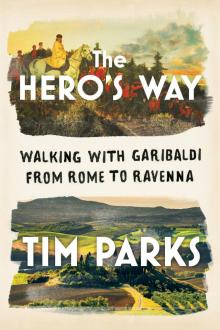 The Hero's Way
The Hero's Way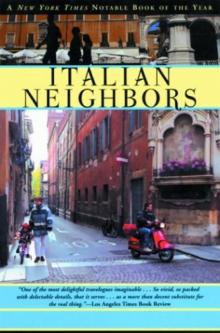 Italian Neighbors
Italian Neighbors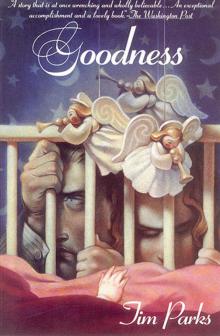 Goodness
Goodness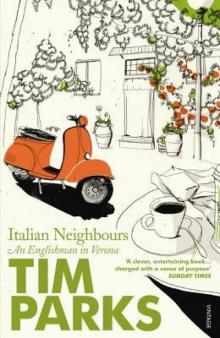 Italian Neighbours_An Englishman in Verona
Italian Neighbours_An Englishman in Verona Italian Neighbours
Italian Neighbours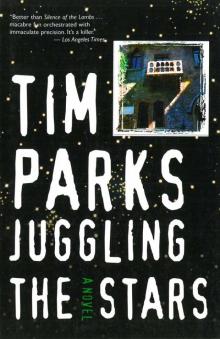 Juggling the Stars
Juggling the Stars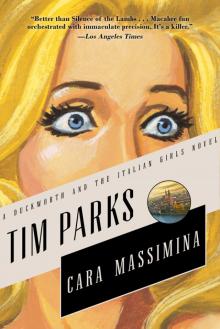 Cara Massimina
Cara Massimina Cleaver
Cleaver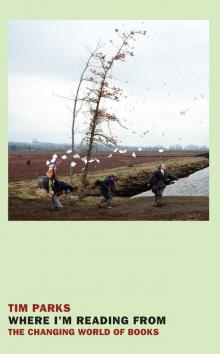 Where I'm Reading From
Where I'm Reading From Dreams of Rivers and Seas
Dreams of Rivers and Seas The Fighter
The Fighter In Extremis
In Extremis Painting Death
Painting Death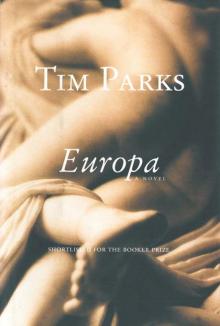 Europa
Europa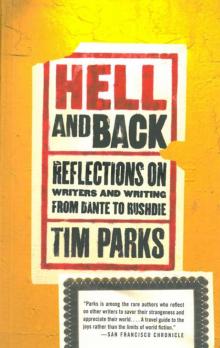 Hell and Back
Hell and Back Judge Savage
Judge Savage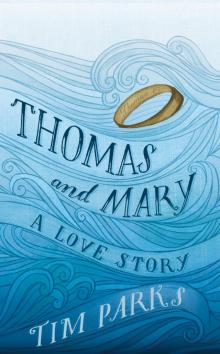 Thomas and Mary
Thomas and Mary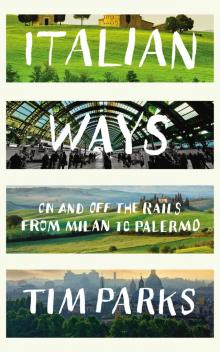 Italian Ways
Italian Ways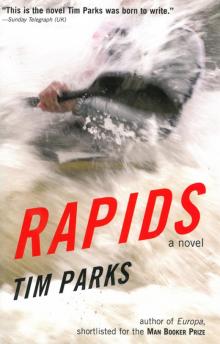 Rapids
Rapids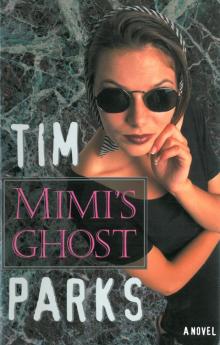 Mimi's Ghost
Mimi's Ghost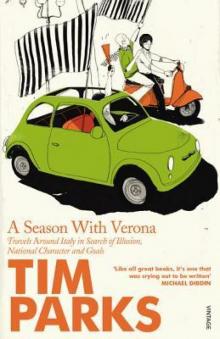 A Season With Verona
A Season With Verona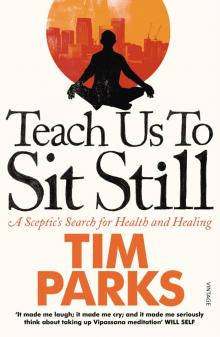 Teach Us to Sit Still
Teach Us to Sit Still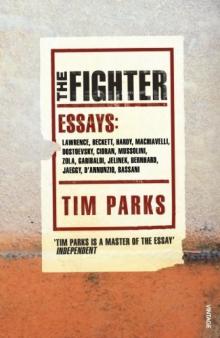 The Fighter_Literary Essays
The Fighter_Literary Essays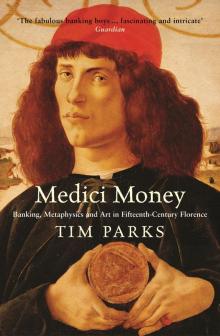 Medici Money
Medici Money